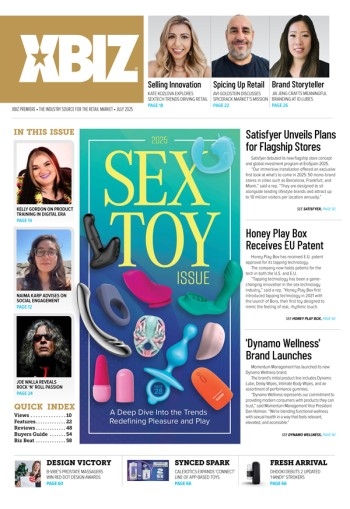Since I'd had so much good fortune with timely, pleasant and (at least seemingly) sober models, I suppose it was just that time for that occasional train wreck to walk through my door. And funny enough, she was on time and prepared. I didn't even notice anything was wrong until my makeup artist pulled me aside.
"She's moving around so much in the chair, I'm having a really hard time doing her makeup," she whispered to me.
"Well maybe she's just excited to be here."
In response, I got that arched eyebrow — you know, the one that suggests you're a complete idiot. "Well, just know it's going to take me a bit longer to finish her up," my markup artist said.
About an hour later, I cornered her again and asked if it was going any better.
"Oh yeah, much better," she muttered sarcastically. "Now she's falling asleep."
"Well maybe she had a long night." I got the eyebrow again.
When we finally got the model in the set for test Polaroids, I couldn't deny the problem any longer. This girl's beautiful face bore the marks of extended drug use — her forehead was heavily lined for someone so young, and her beautiful blue eyes were dead and empty.
Further into the photo session, it became almost impossible to shoot her. She was incapable of taking direction, and though she had a willing attitude, she just couldn't focus. When I asked her to move her left leg, she moved her right. When I asked her to spin toward the softbox, she went the opposite way.
The minute I had her in the perfect position — by physically moving her limbs myself like she was a figurine — she lost her concentration and slumped back into a comfortable slouch. And then she literally began falling asleep on set, so much so that I half gave up by putting her in more comfortable, reclining positions so she wouldn't fall over. And when she would realize she'd just nodded out, suddenly she'd jolt awake and screw her face up in an exaggerated grin, one that grotesquely overcompensated for the fact that she'd just fallen asleep seconds ago. But she was fooling no one.
I thought back on other experiences I'd had with drug problems at work: There was the award-winning starlet who twitched so much that I was sure she was about to break into an epileptic fit. There was the girl who broke out in a sudden, feverish sweat on set and shuddered for hours on our couch. And then my favorite: the model who was so drugged up that we stopped the shoot and sat her down to eat, hoping that some food in her system might sober her up a bit. But our efforts were futile: she promptly passed out face-down in her bowl of spaghetti.
My mother says that the drug abuse was far worse in her day. Back in the 1980s cocaine craze, everyone was running to the bathroom several times an hour. But nowadays all kinds of drugs have infiltrated the industry: A heroin habit seems as common as a Valium addiction. Speed is making quite a strong comeback, and perhaps this can be explained by the drug's powerful ability to make anyone lose drastic amounts of weight, which is of course a convenient side effect for many models.
So what can be done? My mother and I have personally sent girls to therapists, to rehab, and sometimes back to their families to recoup. But you can only help those who want to be helped, and many come right back to their old ways and the destructive company they keep. I think that many porn stars are unaware that there is help out there — help from people who were once in their shoes, help from people who will not ridicule them for what they do for a living.
Of course if society as a whole didn't summarily point the finger at the porn industry as the direct cause of these maladies, girls could more easily recognize that people of all backgrounds and careers develop substance abuse problems. Instead, many of us assume it's the demons inherent in our chosen enterprise: "Well of course another porn star has fallen prey to drug addiction, look at what she does for a living!" an ill-informed cynic might say.
I say then if we, as pornographers, must stand on our own as the black sheep of the entertainment industry, a sense of communal support is key to encouraging those who need help to actually go out and seek it. Why not have more compassion for these models we have built our careers upon?
The return on such an investment must mean something — especially since that investment is the bread and butter of our industry: the girls who have brought us to where we are today.






